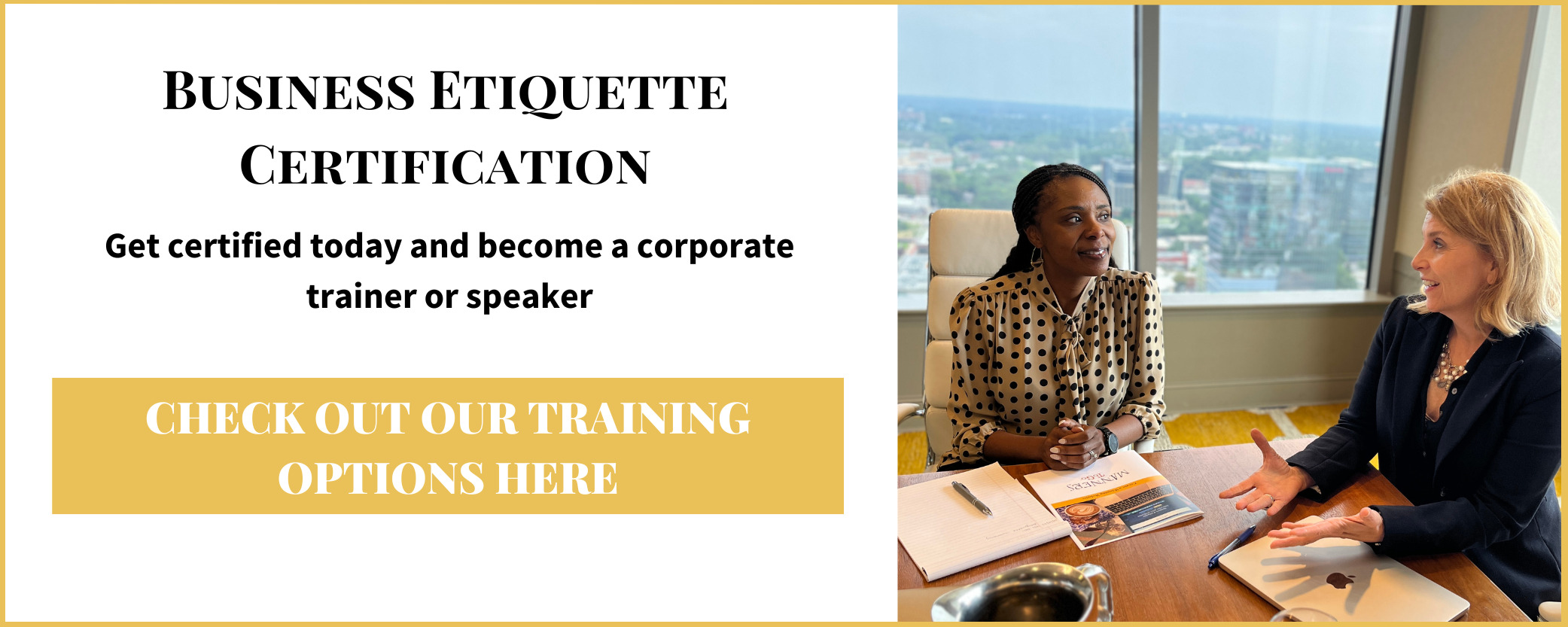
Speaking Engagement in Austin and How I Prepared
As I am writing this article, I am preparing for a speaking engagement in Austin, Texas.
It is Monday afternoon and my flight leaves in the morning. I am packed, prepared and ready!
Being a certified business etiquette speaker takes preparation – on many levels.
Today, I would like to share my experience on how I prepare for the actual speaking engagement.
Business Etiquette Speaker Preparation
We have a great deal to uphold as we travel, speak, present and guide others in the workplace.
Being organized and prepared is critical.
First, I need to share how important it is to spend time with your contact (from the company) to find out exactly what their needs are. What are their pain points? How can you help them improve? What is most meaningful for them from your list of topics?
My preferred method when I am in the midst of customizing, is a Zoom call. We get to know each other. It is certainly more of a human connection than a phone call.
Often, I share my screen to point out certain details.
Remember, you are the expert. Guide them to what will make the biggest impact for their team.
Once these key points are discussed, immediately start on a your presentation.
When you are certified by us, we provide all of the topics to deliver, how to do this, your PPT’s, etc. It is as if we hand you a business in a box.
PowerPoints are there for you as a speaker to stay on topic. Not to ever read word for word. This is boring for the audience.
Sharing stories and observations is key to becoming an impactful speaker. Organize your stories. MindMap them. Write them down. Practice delivering them. I promise, this is helpful for all of us.
Steps You Can Take As a Certified Business Etiquette Speaker To Be Well Prepared and Impactful
- Understand Your Audience:
- Research your target audience thoroughly. Understand their demographics, needs, and expectations. This knowledge will help you tailor your message to resonate with them.
- Define Your Message:
- Clearly define the key messages you want to convey. What are the main takeaways you want your audience to remember?
- Create an Outline:
- Organize your content into a logical structure with a clear beginning, middle, and end. Use bullet points or an outline to map out the flow of your presentation.
- Design Visuals (if applicable):
- If your presentation includes slides or visuals, design them to complement your message. Keep visuals clean and uncluttered, and use them to enhance your points rather than distract from them.
- Develop Engaging Content:
- Craft engaging stories, anecdotes, and examples that illustrate your points and make them memorable.
- Practice, Practice, Practice:
- Rehearse your presentation multiple times. This will help you become more comfortable with your material and refine your delivery.
- Seek Feedback:
- Practice in front of a trusted friend, colleague, or mentor who can provide constructive feedback. Consider recording yourself to analyze your performance.
- Master Your Delivery:
- Work on your speaking skills, including voice modulation, pacing, and body language. Ensure you maintain eye contact with your audience.
- Address Potential Questions:
- Anticipate questions your audience might ask and prepare thoughtful answers. This demonstrates your expertise and builds credibility.
- Stay Updated:
- Keep up-to-date with the latest trends and developments in business etiquette to ensure your content is relevant.
- Time Management:
- Practice your presentation within the allotted time frame. Ensure that you have a clear sense of how long each section should take.
- Technical Check:
- If your presentation involves technology, such as a microphone or projector, arrive early to test and ensure everything works smoothly.
- Pack Essentials:
- Bring any materials or props you need for your presentation, such as handouts, business cards, or promotional materials.
- Dress Appropriately:
- Dress in a manner that aligns with the expected dress code for your speaking engagement. Business attire is usually a safe choice.
- Manage Nervousness:
- Practice relaxation techniques to manage nerves. Deep breathing, meditation, or visualization exercises can help calm your nerves before taking the stage.
- Engage with the Audience:
- During your presentation, interact with your audience. Ask questions, encourage participation, and create a dialogue when appropriate.
- Have a Backup Plan:
- Be prepared for any unexpected issues that may arise, such as technical glitches or disruptions. Have a backup plan to keep the presentation on track.
- Follow Up:
- After your speaking engagement, follow up with the audience, share additional resources, and provide contact information for further questions or inquiries.
Remember that effective preparation is the key to a successful business etiquette speaking engagement.
The more you prepare, the more confident and effective you will be in delivering your message and connecting with your audience.

